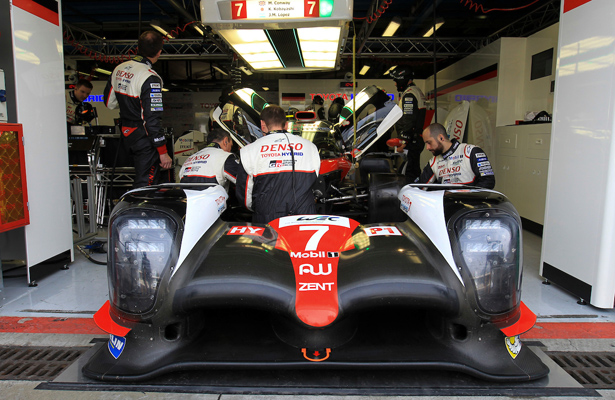
Photo: Vision Sport Agency
Both Porsche and Toyota have already recovered the majority of the FIA and ACO’s newly imposed aero reductions on LMP1 hybrids, aimed to reduce cornering speeds and improve overall safety in the top class of the World Endurance Championship.
The updated prototypes are noticeably different in appearance this year, with a 15mm taller front splitter, narrower rear diffuser and the elimination of vanes on the sidepods, which were determined in FIA studies to increase the likelihood of the cars becoming airborne in high-speed spins.
While ACO Sporting Director Vincent Beaumesnil admitted the changes were aimed to reduce downforce by up to 30 percent, both Toyota’s Vasselon and Porsche LMP1 team principal Andreas Seidl have revealed the numbers are not that significant, due to further off-season developments.
Vasselon explained that Toyota first implemented the changes on its 2016-spec TS050 Hybrid in testing last year, which equated to a 4.5-second per lap loss at Le Mans, and roughly 2 seconds on an average track.
“The aero performance was really down when we just implemented the rules,” Vasselon said. “Then the magic of aero development came and we have recovered a significant part of the downforce, but we’re at lower aero efficiency than last year.
“You will see that the cars look a bit different because it has opened a few things, which last year were not possible or less efficient.”
Beaumesnil said discussions on ways to reduce aero efficiency began nearly two years ago, when LMP1 cars initially saw a significant spike in performance.
Power cuts were rolled out last year, but led to increased cornering speeds, prompting further safety concerns.
“In 2015, there was a huge step in performance,” Beaumesnil told Sportscar365.
“Nobody expected such a step in performance. At that moment we said that we must slow down the cars because at some stage it could be an issue, so we started to work.”
While the biggest change for 2017 has been with the splitter and diffuser, the elimination of the vanes could help keep the cars better planted on the ground.
“It wasn’t interfering with the performance of the car,” Vasselon said. “But we realized after we’ve done a lot of CFD studies with the FIA, Porsche and Audi, these vanes were lifting [the car] quite a lot when spinning.”
Despite the restrictions in place, Porsche’s Seidl believes lap times should remain in the same ballpark to last year.
“From what we’ve seen so far in testing, I think we will not be far from the 2016 lap times,” he said. “But this is the step we’ve made over all the developments that we did.”
Vasselon said they expect to fully recover the aero deficit on their TS050 Hybrid by net year.
“When a rule targets to control performance, we never target to really reduce performance,” he said. “We want to reduce the progress of performance.
“I think the cars are still progressing but not as quickly as they would have progressed without this kind of regulations change.”

























